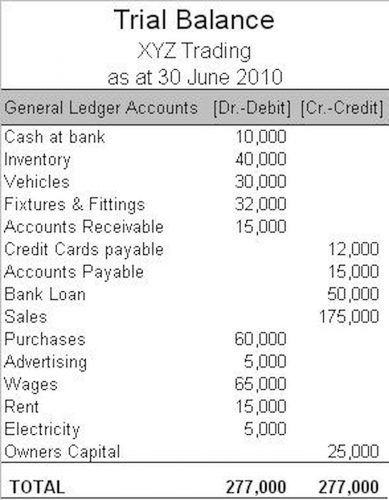
Dividends are typically paid to shareholders of common stock, although they can also be paid to shareholders of preferred stock. Shareholders are typically entitled to receive dividends in proportion to the number of shares they own. Stock dividends (also called dividend account bonus shares) refer to issuance of shares of common stock by a company to its existing shareholders in the proportion of their shareholding without any receipt of cash.

Accounting for Prepaid Rent in Financial Statements: Recognition, Entries, and Reporting Strategies
They can also signal the financial health and stability of a company, as well as its confidence in its future growth prospects. Companies that pay consistent or increasing dividends tend to have strong cash flows and earnings, while companies that cut or suspend dividends may face financial difficulties or uncertainty. When a cash dividend is declared, the board of directors specifies an amount that is to be paid per share to stockholders as of specified record date on a specified payment date. For shareholders, the tax treatment of dividends varies depending on the jurisdiction and the type of dividend received. In many countries, qualified dividends are taxed at a lower rate compared to ordinary income, providing a tax advantage to investors.
4 Dividends
Companies must also consider the requirements of its shareholders when calculating the dividends to pay out to their shareholders. Dividends are not assets as they are not a resource that a company owns or controls. Finally, dividends are not expenses either, as they are do not represent an outflow of economic benefits during a period and are also not a part of the Statement of Profit or Loss of a company. This includes the definition of dividend, dividend policies, and how to account for dividends and retained earnings. Dividend accounting significantly influences corporate strategies contra asset account and investor decisions.

Dividends Declared Journal Entry

Dividend payments are also recorded as cash outflows in the financing activities section of the cash flow statement. At the date the board of directors declares dividends, the company can make journal entry by debiting dividends declared account and crediting dividends payable account. When a company declares a dividend, it is essentially creating a liability to its shareholders.
- Adherence to tax codes, such as the Internal Revenue Code (IRC) in the United States, is also vital, as these regulations affect the tax treatment of dividends for both companies and shareholders.
- This account is a critical indicator of a company’s capacity to reinvest in its operations and its potential for future growth.
- This is referred to as capitalizing retained earnings and makes that part of retained earnings transferred to permanent capital unavailable for future cash dividends.
- The amounts within the accounts are merely shifted from the earned capital account (Retained Earnings) to the contributed capital accounts (Common Stock and Additional Paid-in Capital).
- Companies must account for dividends and retained earnings in two steps, once when they declare dividends, and next when they pay shareholders.
- From the moment dividends are declared to the point where they impact a company’s balance sheet, every entry must be carefully documented.

International accounting standards, such as those set by the International Financial Reporting Standards (IFRS), provide guidelines for the recognition and presentation of dividends in financial statements. Under IFRS, dividends are recognized as a liability when they are appropriately authorized and no longer at the discretion of the entity. This typically occurs when the dividend is declared by Bookkeeping for Chiropractors the board of directors and approved by shareholders, if required. The timing of recognition is crucial for ensuring that financial statements accurately reflect the company’s obligations and financial position.
How to record dividend declared
Most mature and stable firms restrict their cash dividends to about 40% of their net earnings. The process involves specific journal entries that must be meticulously recorded to ensure accuracy in financial statements. This journal entry is to eliminate the dividend liabilities that the company has recorded on December 20, 2019, which is the declaration date of the dividend.
- When a stock dividend is declared, the retained earnings account is debited for the fair value of the additional shares to be issued.
- The first class of shareholders is those who look for dividend returns from their investments.
- This timing difference must be carefully managed to ensure that financial statements accurately reflect the company’s obligations and cash flows.
- The process involves specific journal entries that must be meticulously recorded to ensure accuracy in financial statements.
- We may earn a commission when you click on a link or make a purchase through the links on our site.

It is crucial for the company to ensure that the cash account has sufficient funds to cover the dividend payment, as failure to do so could result in financial distress or legal issues. When a company declares a cash dividend, it commits to paying a specific amount of money to its shareholders. The accounting process begins with the declaration, where the company debits Retained Earnings and credits Dividends Payable. This entry reduces the retained earnings, reflecting the portion of profits allocated for distribution, and creates a liability.
- They are a distribution of the net income of a company and are not a cost of business operations.
- In return, the company may choose to distribute some of its earnings to these owners, or shareholders, in the form of dividends.
- On the payment date, the company will need to settle the liability recorded earlier.
- It is the date that the company commits to the legal obligation of paying dividend.
- Companies that adopt a residual dividend policy pay their shareholders a dividend from their remaining profits after paying for capital expenditures and working capital requirements.
- The number of shares outstanding has increased from the 60,000 shares prior to the distribution, to the 78,000 outstanding shares after the distribution.
- As a stock dividend represents an increase in common stock without any receipt of cash, it is recognized by debiting retained earnings and crediting common stock.
- Companies that do not want to issue cash or property dividends but still want to provide some benefit to shareholders may choose between small stock dividends, large stock dividends, and stock splits.
- When investors receive a stock dividend, the cost per share of their original shares is reduced accordingly.
- At Finance Strategists, we partner with financial experts to ensure the accuracy of our financial content.
The dividend payout ratio, which measures the proportion of earnings distributed as dividends, provides insights into the company’s earnings retention and distribution strategy. A high payout ratio might suggest limited reinvestment in growth opportunities, while a low ratio could indicate a focus on internal growth. Similarly, ROE, which measures the return generated on shareholders’ equity, can be affected by dividend payments.
11 Financial’s website is limited to the dissemination of general information pertaining to its advisory services, together with access to additional investment-related information, publications, and links. Cynthia Gaffney has spent over 20 years in finance with experience in valuation, corporate financial planning, mergers & acquisitions consulting and small business ownership. A Southern California native, Cynthia received her Bachelor of Science degree in finance and business economics from USC. On the Date of Payment, you would make an entry to debit Stock Dividends Distributable and credit the Common Stock account. Amy is a Certified Public Accountant (CPA), having worked in the accounting industry for 14 years. She is a seasoned finance executive having held various positions both in public accounting and most recently as the Chief Financial Officer of a large manufacturing company based out of Michigan.
